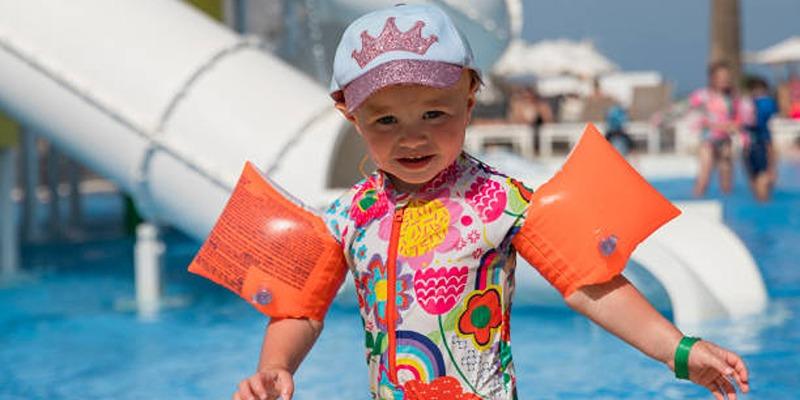10 Essential Tips for Staying Safe In and On the Water
Spending time near or in the water can be refreshing, but prioritizing safety is essential to prevent risks and ensure a truly enjoyable experience. Staying informed alongside being prepared will determine the difference between an enjoyable experience or dangerous moments during swimming, boating activities or beach relaxation. People engaging in water activities need to follow precautionary measures because strong currents and unexpected weather along with accidents are possible risks in these situations.
1. Master the Art of Swimming
Swimming is a fundamental life skill that everyone, regardless of age, should acquire. Beyond being a fun and effective way to stay active, it plays a vital role in personal safety. Formal swimming lessons can significantly lower the risk of drowning while fostering confidence and ease in the water. Mastering essential techniques, like floating and treading water, can make all the difference in an emergency.
For non-swimmers, it’s wise to avoid deep water, strong currents, or unsupervised swimming areas. Children, in particular, should be encouraged to start learning early—this crucial skill could one day save their life or allow them to assist someone in need. Whether for recreation or safety, becoming a competent swimmer is an investment that lasts a lifetime.
2. Always Wear a Life Jacket
Wearing a life jacket is a simple yet powerful step to ensure your safety on the water. Whether you're boating, kayaking, paddleboarding, or participating in water sports, a properly fitted life jacket is essential. Even the strongest swimmers can encounter unexpected dangers like fatigue, strong currents, or sudden changes in water conditions. Accidents happen fast, and a life jacket provides the buoyancy you need to stay afloat and buy precious time to react.
Choose a life jacket that fits snugly, feels comfortable, and meets safety certifications from trusted authorities. Before heading out, inspect it for any signs of damage or wear to ensure it functions properly when it matters most.
3. Be Prepared for Changing Weather
Sudden storms, high winds, or heavy rain can quickly turn a fun outing into a dangerous ordeal. Use trusted weather apps or marine forecasts to stay informed about current and upcoming conditions.
While on the water, remain vigilant—dark clouds, rising winds, lightning, or a sudden temperature drop are clear signs of trouble. If you spot any of these, it’s best to postpone or cut your trip short to prioritize safety over adventure.
4. Swim in Designated Areas

Choose swimming spots that are monitored by lifeguards and clearly marked as safe. These areas are carefully selected to reduce risks like strong currents, hidden obstacles, or sudden drop-offs. The presence of lifeguards adds an essential layer of protection, ensuring swift action during emergencies and giving you peace of mind as you enjoy the water.
Avoid venturing into unfamiliar or isolated locations, which may hide dangers such as unpredictable tides, sharp rocks, or hazardous marine life. Sticking to designated zones ensures a safer, more enjoyable experience for you and those around you.
5. Never Swim Alone
No matter how skilled you are, swimming alone can be risky. Even the strongest swimmers can encounter unexpected challenges like cramps, exhaustion, or powerful currents. Always have a swimming buddy who can assist or call for help in an emergency.
If you're boating, paddleboarding, or participating in any water activities, let someone onshore know your plans, including your route and expected return time. Taking this simple precaution ensures that help can be summoned if needed.
6. Supervise Children Closely
Children’s curiosity can sometimes lead them into dangerous situations, especially around water. Drowning can occur quickly and silently, making constant, attentive supervision essential whenever children are in or near water—even if they know how to swim. Always assign a responsible adult to watch over them, ensuring their full focus remains on the task.
Avoid distractions like phones, conversations, or multitasking. In group settings, consider using tools like a “water watcher card” to clearly identify who is actively supervising. To enhance safety, equip kids with properly fitted flotation devices designed specifically for them, but remember these are no substitute for vigilant oversight.
7. Stay Hydrated
When engaging in water activities, prioritizing hydration and avoiding substances that impair judgment is essential. They dulls your senses, slows reaction times, and compromises balance, making it harder to react to unexpected situations in the water.
Similarly, dehydration can cause fatigue, dizziness, and heat-related illnesses, significantly increasing the risk of accidents. To stay safe, always bring plenty of water and take regular breaks to cool down, rest, and rehydrate—especially on hot days.
8. Master Basic Water Rescue Skills
Having basic water rescue skills, such as CPR and first aid, can be a lifesaver in emergencies. These essential techniques empower you to respond quickly and confidently, offering critical help until professional assistance arrives. For instance, knowing how to safely approach and aid someone struggling in water can prevent harm to both the victim and yourself.
Organizations like the Red Cross and local community centers often provide beginner-friendly water safety and rescue courses. These programs teach vital skills, including recognizing the signs of drowning, performing life-saving procedures, and effectively using rescue equipment.
9. Stay Alert to Changing Water Conditions
Water conditions can shift suddenly, so it’s vital to remain vigilant. Pay attention to waves, currents, and tides, especially in open waters. If caught in a rip current, stay calm, and swim parallel to the shore until you’re free. Never dive into unfamiliar waters, as unseen rocks or shallow areas can cause severe injuries.
10. Follow Boating Safety Guidelines

When operating a boat, jet ski, or other watercraft, always adhere to local safety regulations. Make sure your vessel is in good working order and stocked with essential safety gear, such as life jackets, flares, and a first aid kit. Avoid reckless behavior, maintain safe speeds, and keep a respectful distance from swimmers and other boats.
Respect Marine Life and the Environment:
While enjoying water activities, remember to respect the natural environment. Avoid disturbing marine life, and refrain from littering or leaving trash behind. Protecting the ecosystem ensures that everyone can continue to enjoy these beautiful spaces for years to come.
Conclusion:
Ensuring safety in and around water begins with preparation, awareness, and responsible actions. By following these 10 essential tips, you can significantly reduce risks and enjoy your time on the water with confidence. Remember, water safety is a shared responsibility—encourage those around you to adopt these practices as well. Whether you're swimming, boating, or simply relaxing by the shore, prioritizing safety guarantees that your water adventures remain both enjoyable and free from accidents.












